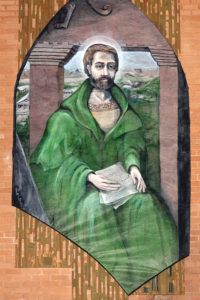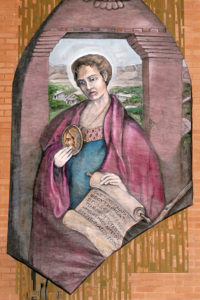Ss. Simon and Jude
Feast Day: Oct. 28
Jude, also called “Thaddeus,” was a brother of St. James the Lesser and was the Apostle who asked the Lord at the Passover Supper the night before His Death why He had manifested Himself only to His disciples and not to the whole world (Jn 14:22). St. Jude is also the Apostle who authored the epistle contained in the New Testament, encouraging the early Church in the face of adversity.

When the Eleven dispersed from Jerusalem to proclaim the Kingdom of God in other lands, Jude departed from Galilee and Samaria to go into Syria, Armenia and ancient Persia. In this area, authoritative sources claim, he met Simon, and their missionary partnership won tens of thousands of Babylonians and people from other cities for Christ. As always, the Gospel earned for itself both followers and enemies: for the two Apostles, the hour of supreme witness eventually arrived.
Arrested and taken to the Temple of the Sun, the sentence imposed on both was to worship the goddess Diana, and so to deny Christ. In refusing, it is said that Jude Thaddeus declared pagan idols false, and that at the same time two horrible demons came out of the temple, destroying him. Frightened, the people watching the scene are said to have pounced ferociously on the two Apostles, who were brutally killed. Their relics are kept in the Basilica of St. Peter.


St. Jude Thaddeus is invoked in desperate situations because his New Testament letter stresses that the faithful should persevere in the environment of harsh, difficult circumstances, just as their forefathers had done before them. Therefore, he is the patron of desperate situations, forgotten causes, hospital workers, hospitals, impossible causes and lost causes. He is represented as bearded man holding an oar, a boat, boat hook, a club, an axe or a book. Nearly every image of him depicts him wearing a medallion with a profile of Jesus. He usually has a small flame above his head and he often carries a pen. Having been cut in half with a saw, St. Simon is often depicted with this tool.
Impact on the Diocese of Phoenix
Because a cathedral is a symbol of unity for a diocese, as patrons of the cathedral, Ss. Simon and Jude also represent that unity, and their feast day applies to the whole diocese.





